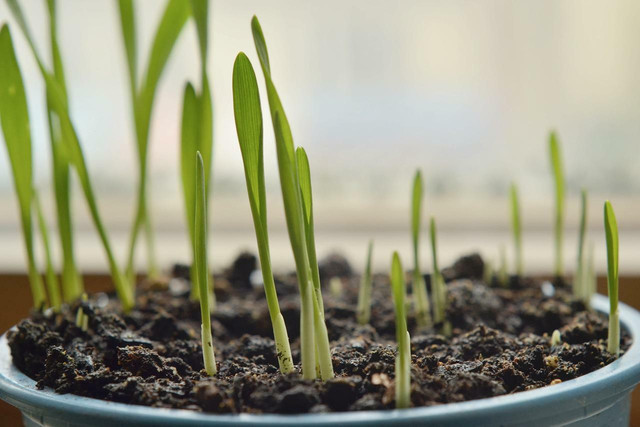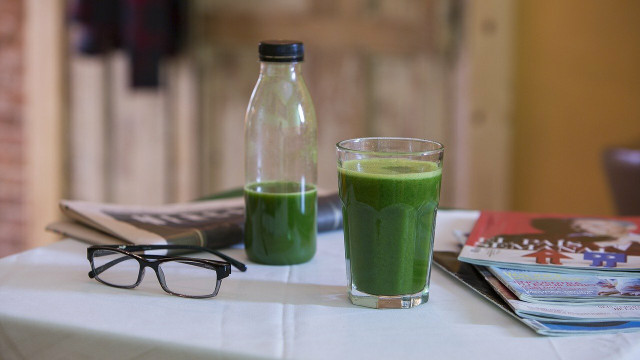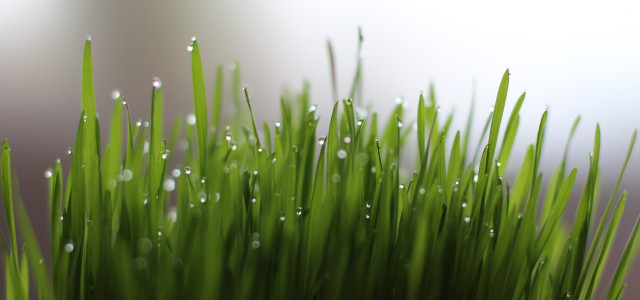If you’ve seen this superfood in health food stores, you may want to know how to grow wheatgrass yourself. We’ll explore some benefits and growing tips below.
Before you learn how to grow wheatgrass, you may want to know what exactly it is. Though it’s touted as a superfood on juice bar menus, you my be surprised learn that wheatgrass is simply the sprouts of the common wheat plant, the same grown worldwide for flour and bread. While most wheat is allowed to mature for the grain, wheatgrass is harvested early when the shoots are packed with vitamins and minerals. Here are some reasons why wheatgrass has rapidly become a superfood:
- Wheatgrass is rich in antioxidants, minerals, and vitamins C and E.
- It may help lower cholesterol, particularly if you have a high-fat diet.
- It may help regulate blood-sugar in those with diabetes.
- Like other leafy greens, wheatgrass is high in fiber and thylakoids, which may aid in weight loss.
- It may have anti-cancer properties.
How To Grow Wheatgrass



Learning how to grow wheatgrass is a simple process you can do right at home and is similar to how to grow microgreens. Here are some simple steps:
- Get some organic wheat seeds, preferably winter wheat (example Bench View Farms, available on Amazon**).
- Follow the instructions for growing sprouts in a jar: this requires soaking and rinsing the seeds for 2-3 days until they sprout.
- Use a shallow tray to grow your sprouts with or without soil. Growing sprouts in soil is more involved, but it provides the wheatgrass with more nutrients than without. Simply spread your wheatgrass seeds on a one-inch layer of soil in your tray and water lightly. If using no soil, then spread the sprouts onto the tray and add enough water to cover to tops of the sprouts.
- Cover the trays with a lid or damp cloth or newspaper. This ensures the wheatgrass has a dark and moist environment to grow.
- Remove the covering when the sprouts reach on inch. Water lightly or with spray bottle daily.
- Your wheatgrass should be ready to harvest once it reaches five inches, around day eight.
Harvesting and Preparing Wheatgrass



Once your wheatgrass has reached maturity, it’s time to harvest. The easiest way to harvest is simply by giving your wheatgrass a haircut with a pair of scissors. This method also allows the seeds in the tray to re-sprout and give you more wheatgrass, although each regrowth will be weaker. If you’re growing wheatgrass without soil, you can empty the entire tray and eat the seeds as well: they are all edible! Wheatgrass loses some of its health benefits while cooking, so the most common method of preparation is juicing. Here are some ideas for what you can do with your wheatgrass juice:
- Drink it as a concentrated shot, or add it to green juice.
- Add it as a compliment to other juices, smoothies, or even kombucha cocktails.
- Add it to soups, sauces, dips, salad dressings, or homemade pesto.
- Use it in parfaits, açai bowls, or desserts, or in vegan ice cream recipes.
Read more:
- How to Make Celery Juice: Recipe and Benefits
- Raw Food Diet: Risks, Benefits & Easy Recipes
- How to Grow & Care for Watercress: Indoors & Outdoors
Do you like this post?







